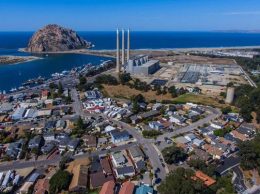By Linda Krop on Feb. 15, 2013
[Editor’s Note: In December 2012, the Business Times editorial page proposed adding renewable energy projects to a state list of project types that undergo a streamlined environmental review process. Below, the Environmental Defense Center, a Santa Barbara nonprofit whose mission is to protect and advance the region’s environment through education, advocacy and legal action, responds.]
Dear Editor:
In December the Pacific Coast Business Times published an editorial encouraging the reform of the California Environmental Quality Act, or CEQA, a 40-year-old law that requires public agencies to consider, and where possible, minimize, impacts from industrial and development projects. As this letter demonstrates, CEQA makes for better projects and informed public engagement.
Take the Lompoc Wind Energy Farm in Santa Barbara County that was approved in 2009 as an example. Through the CEQA process, the project was modified to provide additional protections for important wildlife such as migrating birds and eagles. Thanks to this process, several community and environmental groups supported the project when it was considered by the county Planning Commission and Board of Supervisors.
Unfortunately, the project has not yet been constructed. The editorial referenced a CEQA lawsuit from a neighbor as the culprit, but in fact the lawsuit has been unsuccessful and has not stopped the project. Rather, it appears that the proponent still needs to secure the necessary financing.
As the Lompoc wind farm demonstrates, CEQA improves projects by addressing local environmental concerns and developing community buy-in. If not for CEQA, it is likely some of the community would have opposed the project.
CEQA isn’t perfect, but it provides a vehicle for community engagement and an opportunity to make projects better. There will be challenges as we address emerging issues such as renewable energy projects, but CEQA provides the forum for a constructive dialogue about these issues.
It allows for disclosure and consideration of project pros and cons to inform decision-making and ultimately results in improved projects such as the Lompoc wind farm. Local planning processes provide additional tools to engage the public, to improve projects, and to garner community consensus for important projects like renewable energy facilities.
In sum, CEQA assists the public and improves governmental review of new development in California by providing an open, inclusive forum for public participation and community input.
Instead of gutting CEQA and accepting a degraded environment, local governments should utilize general plans and other tools to ensure that beneficial projects — like the Lompoc wind farm — get built so we can reach our shared goal of moving away from our reliance on fossil fuels.
Sincerely,
— Linda Krop
Chief Counsel,
Environmental Defense Center,
Santa Barbara






 Print
Print Email
Email
















